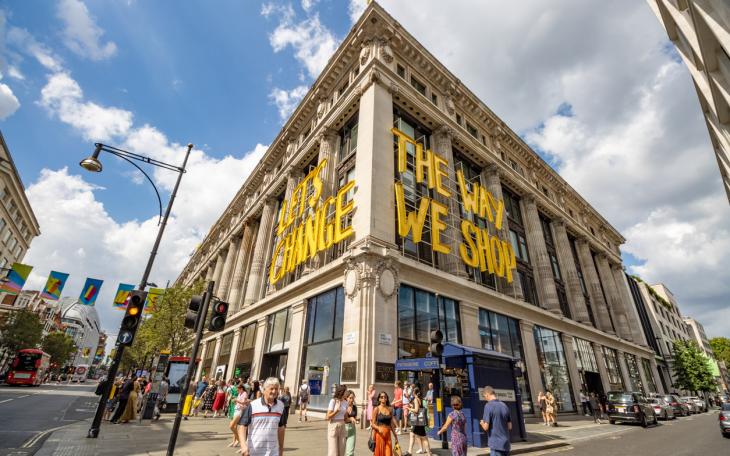Will plans to regenerate Oxford Street be enough to restore it to its glory days?

Oxford Street, one of London's most famous and bustling shopping districts, has been a retail mecca for generations. Its iconic status speaks for itself, but in recent years, there has been a growing debate about whether this well-revered street needs a shake-up. With the retail landscape evolving rapidly amid the challenges posed by changing consumer behaviour, does Oxford Street really need revitalising or is much of the recent criticism much ado about nothing?
I had the pleasure of walking through this area on my way to a client event behind Bond Street and what immediately stuck out to me was that, though streets were packed with people roaming around, the surrounding stores appeared to be anything but busy. The demise of iconic department stores such as House of Fraser and Debenhams has been swiftly followed by a surge in ‘dodgy’ sweet and souvenir shops.
There was a feeling of emptiness – both figuratively and literally. Figures back this up as, up until March of this year, 42 of Oxford Street’s 269 stores, or almost 16%, were vacant — up from 4.3% in 2019 and higher than the average for high streets in London and across Britain, according to the Local Data Company.
Meanwhile, Oxford Street’s European equivalents appear to be racing ahead. Despite an average of 1.42 million people visiting Oxford Street each month, Paris’s Avenue des Champs-Élysées, Amsterdam’s Leidsestraat and Via del Corso in Rome all registered a bigger rebound in footfall last year, data provider MyTraffic found.
To change this and restore Oxford Street to its glory days (much like my beloved Manchester United), a change really is required. Fortunately, plans are afoot: the Oxford Street Programme envisions Oxford Street as a vibrant, high-quality public space for everyone visiting the street.
The £90 million upgrade, announced last year, will result in a more attractive and comfortable street with spacious footways, improved seating, more trees and planting, attractive lighting, and clearer signage.
Now, implementing these changes is easier said than done - preserving Oxford Street's history while embracing innovation is a delicate balance. Striking the right mix between modernisation and maintaining the street's unique character will be challenging, but it is necessary, as Oxford Street clearly needs to evolve before being rendered obsolete.
Ultimately, as previous attempts have discovered, plans to revamp Oxford Street will require careful consideration, community involvement, and collaboration with various stakeholders, including local businesses, residents, and transportation authorities.
Oxford Street has been on a steady decline, falling behind its European counterparts, and as hard as it might be – change needs to come. Only time will tell whether new plans to regenerate the area will see the area’s fortunes reverse, or if it’s all too little, too late.









